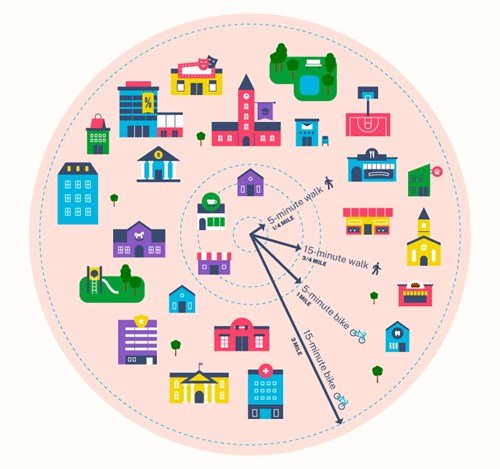Don’t Walk Out on Walkable Cities!
Kate Um
Santa Ana is rated the most walkable city in the Orange County region and the city has further hopes to become a greater walkable city in the future. A “walkable city” is centered on walking as the central mode of transportation, shifting away from the pervasive car culture that originates from the 20th century. Along with other sustainable modes of transportation like public transportation, there must be a short distance between the people and their necessities. Easily accessible facilities such as schools, stores, markets, hospitals and other buildings should be at a walking distance of at most 15 minutes to support and ensure increased human quality of life.
Santa Ana received a score of 67 out of 100, which seems low for a city that tops OC walkable city lists. A score of 70 and above is seen as a great walkable score. This criteria takes into account the walking distance between facilities (the closer, the better), the features to ensure pedestrian safety (ex: road spacing, population density at areas, etc.), and the number of accidents caused by vehicles or infrastructure. This goes hand in hand with easily accessible public transportation (biking routes to subways), to shift the dependency from cars. The key is for infrastructure to be spaced conveniently closer together, becoming more communal instead of the urban sprawl of current cities. Yet, this current structure of our cities inversely increases civilian use of gas in their transportation, expanding to a bigger picture of environmental and economic concerns.
Many have conformed to a lifestyle dependent on vehicles as most Californian cities have not strived for full potential in becoming eco-friendly walkable cities. Irvine neighbor Lauren Lee noted how she can walk or bike to school but not for any place else, requiring a car and quite some distance to have essential things like food, clothes and leisure. A core problem with this is the lack of public transportation’s presence and prevalence within citizens’ lifestyles. As mentioned in previous articles, various complaints on OCSA’s own public transportation options have stirred students to opt for carpooling because of its inconsistencies in arrivals, departures and service. In the past year, there have been OC bus strikes and this matter of equity in public transportation is not realized in California overall. A reliable transit system must assert its presence and establish its reputation to reach most Californian cities, if not all. This becomes a great step toward lower emissions, lower rates of pollution, and healthier environmental footprints for all.
Simply knowing the benefits is not enough to instill change though. The majority of civilians take cars to their destinations and cyclically repeat this lifestyle. The deep-rooted problem is the unwillingness of structure to change American society. It’s hard to rid the old. The conformity of car culture and dependency in American society dates back to the roaring 20s, where automobiles became a key indicator of freedom and prosperity, flashing in its thundering engine and delight. Now, cars are an accustomed item with a typical household owning two or more cars. Since then, cars have lost this impression but there still remains the discrepancy of civilians who cannot afford cars in cities where cars are central to human life. In this case, starting with equitable public transportation to develop into fully functionable walkable cities can alleviate the economic burdens of many.
With transformed infrastructure and a shift in societal thought, walkable cities in California can obtain success. Santa Ana’s Complete Streets Plan strives toward these goals and is yet to be fully realized. As more regions fight for change, we must not walk out on this solution; our homes as walkable cities can become reality.
Diagram of a walkable city. (Courtesy of movebuddha.com)
